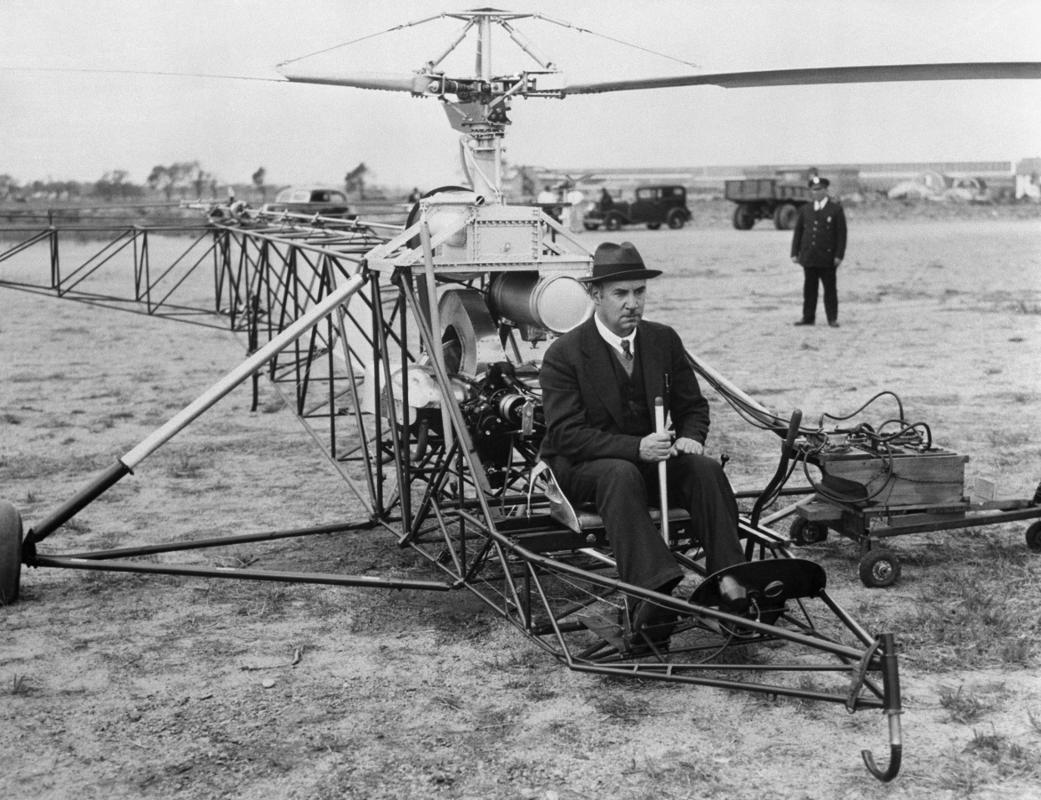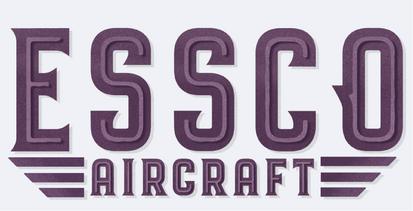
Aviation Appreciation Friday - Igor Sikorsky
Early Life:
Igor Sikorsky was born on May 25, 1889, in Kyiv, Russian Empire (now Ukraine), into a well-educated family. His father, a renowned professor of psychology, and his mother, a physician, nurtured his interest in science and art, especially through the works of Leonardo da Vinci and Jules Verne. By age 12, Sikorsky was already experimenting with model flying machines, sparking a lifelong passion for aviation. After beginning his education at the Saint Petersburg Maritime Cadet Corps, he shifted his focus to engineering, studying in Paris and at the Kyiv Polytechnic Institute. Inspired by the achievements of the Wright brothers and Zeppelin airships, Sikorsky decided to dedicate his life to aviation.
By World War I, Sikorsky had established a successful airplane production business in Kyiv, designing bombers for the war. However, after the Russian Revolution in 1917, he fled to France and eventually the United States in 1919 to escape Bolshevik threats. In America, Sikorsky continued his work in aviation, laying the groundwork for his lasting contributions, particularly in the development of helicopters, which would revolutionize both military and civilian flight.

Photo Credit: immigrantheritage.org
Aircraft Design:
In 1909, with financial support from his sister Olga, Igor Sikorsky returned to Paris, the hub of aviation at the time, to engage with aviation pioneers and deepen his understanding of flight. He returned to Russia in May of that year, where he began designing his first helicopter, although it failed to generate enough lift to fly. Sikorsky continued his efforts, building a second helicopter and experimenting with his first airplane. While his early designs faced several challenges, including an S-2 aircraft crash, he learned invaluable lessons. By 1911, he earned his pilot's license with his S-5 design, which marked his first original aircraft not based on European models. This experience pushed him to think about creating an aircraft that could still fly if one engine failed, an insight he would use in his future designs.
In early 1912, Sikorsky became the Chief Engineer at the Russian Baltic Railroad Car Works, where he achieved significant success by developing the world's first four-engine aircraft, the S-21 Russky Vityaz. This design was revolutionary, and Sikorsky served as the test pilot for its first flight in May 1913. His work on the S-21 Russky Vityaz earned him widespread recognition, and in 1914 he was awarded an honorary degree in engineering. Drawing on this success, he developed the S-22 Ilya Muromets, an airliner that was later repurposed into the world's first four-engine bomber during World War I, for which Sikorsky was honored with the Order of St. Vladimir.
After the war, Sikorsky briefly worked as an engineer for the French forces in Russia during the Russian Civil War. However, as opportunities in war-torn Europe diminished due to the Bolshevik Revolution and civil unrest, Sikorsky decided to emigrate to the United States. On March 30, 1919, he arrived in New York, where he would go on to make his most lasting contributions to aviation, particularly with his work in helicopter development.
Life in the United States:
In the United States, Igor Sikorsky initially worked as a school teacher while seeking opportunities in the aviation industry. In 1923, he founded the Sikorsky Manufacturing Company in Roosevelt, New York, with the support of former Russian military officers and notable backers like composer Sergei Rachmaninoff, who contributed $5,000 to his venture, equivalent to $89,414 in today’s dollars. Despite early setbacks, including a damaged prototype, Sikorsky developed the S-29, one of the first twin-engine aircraft in the U.S. Though slow compared to military planes of the time, the S-29 was a significant achievement for Sikorsky, helping him establish his place in the American aviation industry.
By 1928, Sikorsky had become a naturalized U.S. citizen, and in 1929, his company moved to Stratford, Connecticut, becoming part of the United Aircraft and Transport Corporation (now United Technologies Corporation). During this time, Sikorsky's company produced flying boats like the S-42 "Clipper," used by Pan American Airways for transatlantic flights. While he succeeded in fixed-wing aircraft development, Sikorsky remained dedicated to his early dream of vertical flight. In 1929, he filed his first patent for a "direct lift" aircraft, which would later evolve into one of his most groundbreaking innovations.
Sikorsky’s work on vertical flight culminated in the development of the VS-300, which achieved its first tethered flight in 1939 and a successful free flight in 1940. The VS-300's success led to the creation of the R-4, the world’s first mass-produced helicopter, in 1942. Sikorsky's pioneering rotor design, with a single main rotor and an antitorque tail rotor, became the standard configuration for most modern helicopters. His contributions to vertical flight not only revolutionized aviation but also cemented his legacy as one of the most influential figures in the history of flight.
Legacy:
Sikorsky passed on October 26, 1972, at 83, at this home in Easton, Connecticut. In recognition of his immense contributions to aviation, Igor Sikorsky was inducted into the International Air & Space Hall of Fame in 1966. His life and achievements were later dramatized in the 1979 Soviet biopic The Poem of Wings. In the film, a working model of Sikorsky’s famous Ilya Muromets bomber was recreated. His legacy is also commemorated in Connecticut, where the Sikorsky Memorial Bridge and Sikorsky Memorial Airport are named in his honor. Sikorsky was officially designated a Connecticut Aviation Pioneer. His company, the Sikorsky Aircraft Corporation, now under Lockheed Martin, remains a leading manufacturer of helicopters to this day.
Sikorsky's influence extended far beyond aviation, as he was inducted into the National Inventors Hall of Fame and the Junior Achievement U.S. Business Hall of Fame in 1987. Further honors followed, including a Kyiv street being renamed in his honor in 2011 at the request of the U.S. Embassy in Ukraine. A Russian supersonic bomber was named after him in 2012, recognizing his work on Russia’s first heavy bomber during World War I. His global legacy was further affirmed when Flying magazine ranked Sikorsky number 12 on its list of the 51 Heroes of Aviation in 2013.
In his homeland, Sikorsky’s contributions were memorialized in 2016 when the National Technical University of Ukraine was renamed the "Igor Sikorsky Kyiv Polytechnic Institute," a tribute to one of its most distinguished students. Two years later, in 2018, Kyiv International Airport was officially renamed Igor Sikorsky Kyiv International Airport Zhuliany, ensuring his name remains a central part of aviation history in both Ukraine and around the world.
Bibliography:
Lockheed Martin – Sikorsky Helicopters
Encyclopedia Britannica – Igor Sikorsky
National Aviation Hall of Fame
Wikipedia – Igor Sikorsky
